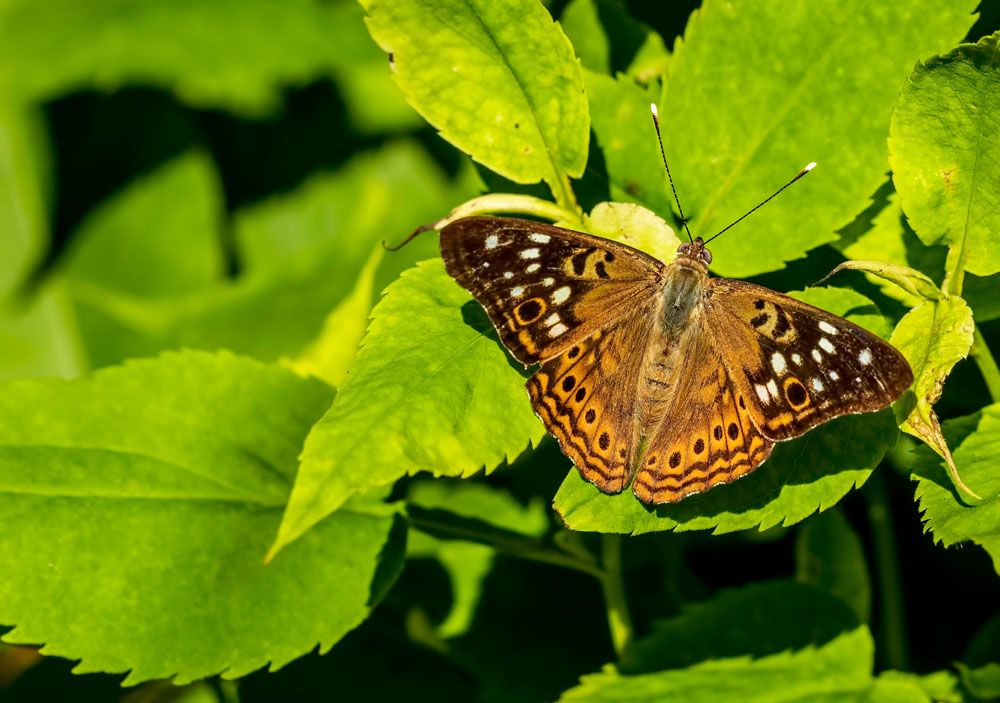
Hackberry Butterfly – Asterocampa celtis
Hackberry Butterfly – Asterocampa celtis
Common Name: Hackberry Butterfly
Latin Name: Asterocampa celtis
Appearance:
The Hackberry Butterfly has a wingspan of 2.5-3 inches, brown with irregular light patches, and has two small eyespots on the hindwings.
- Eggs:The eggs of the Hackberry Butterfly are pale green, round, ribbed, and are laid singly on hackberry leaves.
- Pupae:The pupae are brown and mottled and are suspended by a cremaster from a twig or stem.
- Larvae:The larvae of the Hackberry Butterfly are light green with black and white stripes and spines, resembling a twig, and feed on hackberry, elm, and sugarberry leaves.
- Adults:Hackberry Butterfly feeds on tree sap, rotting fruit, and animal droppings. Males defend territories and mate with females.
